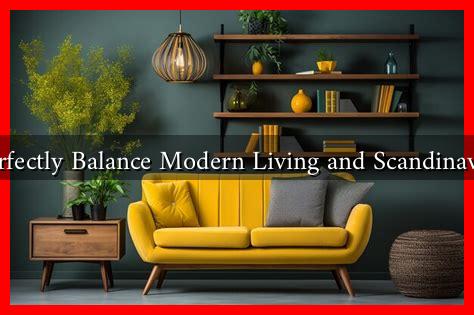-
Table of Contents
- How to Perfectly Balance Modern Living and Scandinavian Design
- Understanding Scandinavian Design Principles
- Integrating Scandinavian Design into Modern Living Spaces
- 1. Embrace Neutral Color Palettes
- 2. Choose Functional Furniture
- 3. Incorporate Natural Elements
- Case Studies: Successful Integrations of Scandinavian Design
- Statistics Supporting Scandinavian Design
- Conclusion: Achieving the Perfect Balance
How to Perfectly Balance Modern Living and Scandinavian Design
In an era where urban living often clashes with the desire for comfort and aesthetics, Scandinavian design emerges as a beacon of simplicity and functionality. This design philosophy, rooted in the Nordic countries, emphasizes minimalism, natural materials, and a connection to nature. Balancing modern living with Scandinavian design can create a harmonious environment that promotes well-being and efficiency. This article explores how to achieve this balance through thoughtful design choices, practical tips, and real-world examples.
Understanding Scandinavian Design Principles
Before diving into how to integrate Scandinavian design into modern living, it’s essential to understand its core principles:
- Minimalism: Scandinavian design favors simplicity and functionality over excess. This means fewer items, but each piece is chosen for its utility and aesthetic appeal.
- Natural Materials: Wood, stone, and textiles are commonly used, reflecting a connection to nature. These materials not only enhance the aesthetic but also contribute to a healthier indoor environment.
- Light and Space: Natural light is a crucial element. Large windows and open spaces are hallmarks of Scandinavian homes, promoting a sense of airiness and tranquility.
- Functionality: Every piece of furniture and decor should serve a purpose. This practicality is essential in modern living, where space is often limited.
Integrating Scandinavian Design into Modern Living Spaces
To create a living space that embodies both modernity and Scandinavian design, consider the following strategies:
1. Embrace Neutral Color Palettes
Scandinavian design often utilizes a neutral color palette, which can make spaces feel larger and more serene. Shades of white, gray, and beige can be accented with pops of color through accessories or artwork. For example, a white living room can be enlivened with a bright yellow throw pillow or a vibrant piece of art.
2. Choose Functional Furniture
Opt for furniture that is both stylish and functional. Scandinavian designers like Hans J. Wegner and Arne Jacobsen have created iconic pieces that are timeless yet practical. Look for:
- Multi-functional furniture, such as a coffee table that doubles as storage.
- Modular sofas that can be rearranged to suit different occasions.
- Lightweight chairs that can be easily moved around for gatherings.
3. Incorporate Natural Elements
Bringing nature indoors is a key aspect of Scandinavian design. Consider the following:
- Add indoor plants to purify the air and enhance aesthetics.
- Use wooden furniture and decor to create warmth and texture.
- Incorporate natural light through large windows or skylights.
Case Studies: Successful Integrations of Scandinavian Design
Several modern homes exemplify the successful integration of Scandinavian design principles:
- The H House in Sweden: This home features an open floor plan with large windows that flood the space with natural light. The use of wood and neutral colors creates a warm, inviting atmosphere.
- The K House in Norway: This residence combines modern architecture with traditional Scandinavian elements, such as a wooden facade and minimalist interiors, showcasing how to blend old and new effectively.
Statistics Supporting Scandinavian Design
Research indicates that environments designed with Scandinavian principles can significantly impact well-being. A study by the University of Exeter found that natural light and greenery in workspaces can increase productivity by up to 15%. Furthermore, a survey by the American Society of Interior Designers revealed that 90% of respondents believe that their home environment affects their mood and well-being.
Conclusion: Achieving the Perfect Balance
Balancing modern living with Scandinavian design is not just about aesthetics; it’s about creating a space that enhances your quality of life. By embracing minimalism, functionality, and natural elements, you can transform your home into a sanctuary that reflects both contemporary needs and timeless design principles. Remember, the goal is to create a harmonious environment that promotes well-being, efficiency, and a connection to nature.
For more insights on Scandinavian design, you can explore resources like Scandinavian Design.


